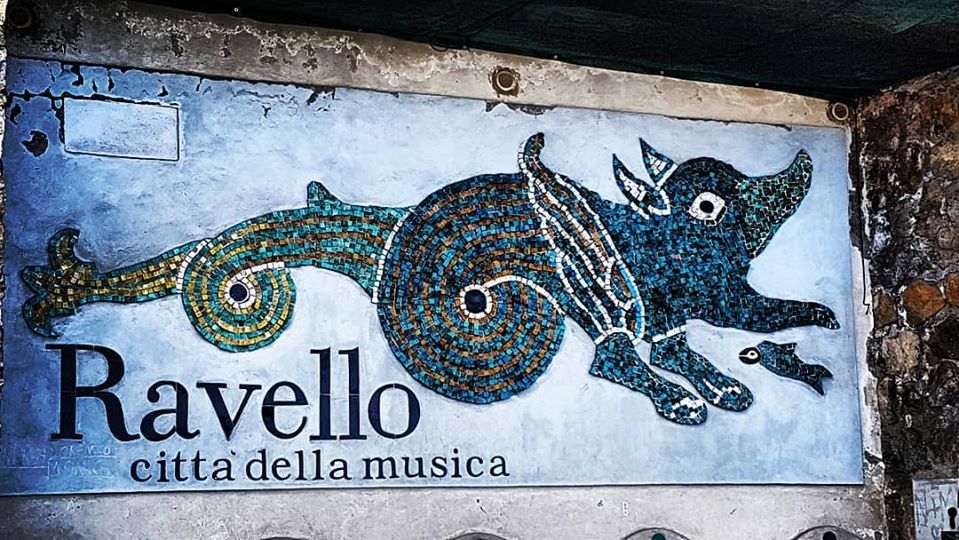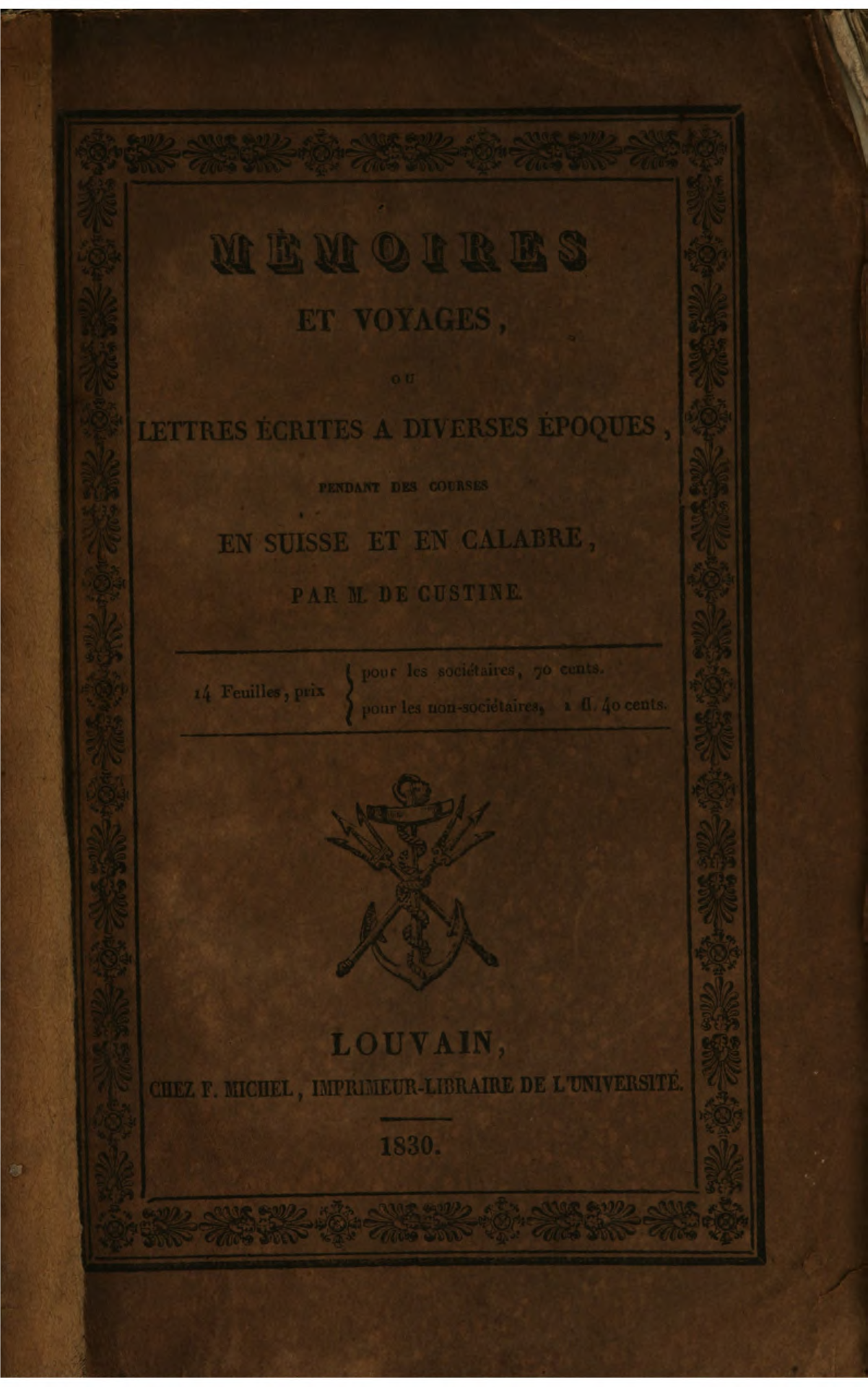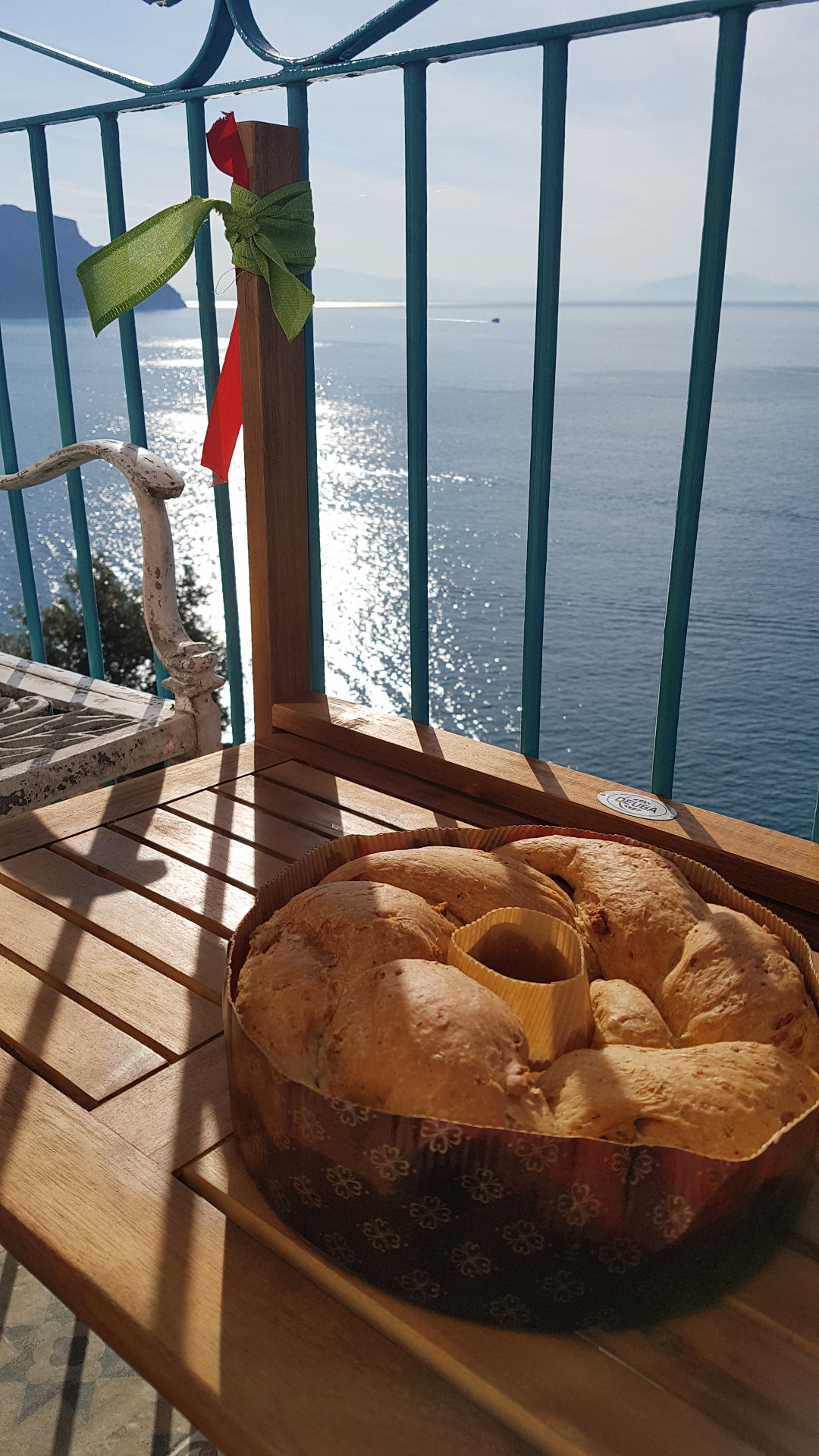
Casa Gargano Blog
Images, words, places and flavors from the Amalfi Coast

Ravello. Presentazione del nuovo percorso escursionistico intitolato a "Francis Nevile Reid - L'acqua dell'inglese"
Sabato 22 marzo, camminata e apposizione della segnaletica Cai. L'iniziativa inserita nel progetto Ravello Hiking Grand Tour

Amalfi. Moderna nel Medioevo, di John Morrissey (Autore), Olimpia Gargano (Traduttrice)
Nell'Alto Medioevo nasceva in Costiera Amalfitana una società che appare estremamente moderna: un'agricoltura variegata che offriva fonte di sussistenza e prospettive di mobilità sociale, cooperative per il finanziamento delle attività commerciali, imprenditoria femminile, regole del lavoro garantite da un diritto marittimo di ampia fama. La disponibilità all'innovazione comprendeva praticamente tutti i settori, dalle attività produttive all'arte. Amalfi, prima Repubblica Marinara, disponeva di una vasta rete mediterranea che collegava il mondo islamico all'impero bizantino e all'Europa occidentale latina. Questo libro offre una visione d'insieme sulla storia di Amalfi nel Medioevo: cultura, scienze, tecnologia, economia e politica. Mentre contribuisce alla ricerca storica, grazie alla sua narrazione saggistica è fonte d'ispirazione per viaggiatori e appassionati di politica, per una migliore comprensione della storia e cultura non soltanto della Costiera Amalfitana ma dell'intero Mediterraneo.

Dal libro al film. Il barcaiuolo d'Amalfi (1918) della regista salernitana Elvira Notari
di OLIMPIA GARGANO
150 anni fa nasceva Elvira Coda Notari (Salerno, 10 febbraio 1875 – Cava dei Tirreni, 17 dicembre 1946), regista, sceneggiatrice e imprenditrice cinematografica. Fra i circa sessanta film realizzati sotto la sua direzione ce n'è uno tratto da un "romanzo amalfitano" dello scrittore Francesco Mastriani.

Immagini in viaggio. Il campanile della Maddalena di Atrani nelle rappresentazioni artistico – letterarie
Il 750° anniversario della fondazione della Collegiata di Santa Maria Maddalena di Atrani verrà ricordato domani, 28 novembre 2024, nella Biblioteca Comunale di Amalfi alle ore 9.30, attraverso interventi che ne descriveranno origini storiche, tradizioni popolari, arte, architettura e testimonianze letterarie. Ne pubblichiamo qui una sintesi, con un'anticipazione delle testimonianze inedite che saranno presentate nella manifestazione di domani.
di OLIMPIA GARGANO
ATRANI. Questa romantica cittadina italiana si trova nel Golfo di Salerno, a una sessantina di chilometri da Napoli. Ha quasi tremila abitanti, e in termini prosaici Atrani e la vicina Amalfi possono essere considerate le grandi produttrici italiane di pasta. Ma è più probabile che il lettore preferisca considerarla su un piano poetico di sublimità e magnificenza del territorio: e a questo proposito non potremmo trovare niente di meglio di una meravigliosa fedeltà alla natura, corroborata da una ricchezza d'ingegno pari soltanto al particolare clima italiano e che pochi artisti possiedono in pari misura, e che ora si può ammirare nella galleria De Vries, in Tremont Street. Quando chi vi scrive entrò per la prima volta nella sala pochi giorni fa, avvertì immediatamente una sensazione di calore e dovette togliersi il soprabito, a tal punto un indescrivibile languore sembrava irradiarsi su tutto ciò che era nel raggio d'azione di questo dipinto.
Cominciava così un lungo articolo di prima pagina pubblicato il 23 aprile 1870 sul popolare quotidiano Boston Daily Transcript. L'occasione che diede origine a quello che è probabilmente il primo testo giornalistico americano interamente dedicato ad Atrani fu l'esposizione, in una famosa galleria d'arte di Boston, di questo dipinto di G. Loring Brown, uno dei più ricercati paesaggisti dell'epoca.
George Loring Brown, View of Atrani, Gulf of Salerno. Collezione privata. Image credit: ©Sotheby'sAllo stesso artista si deve un altro dipinto di Amalfi altrettanto inedito, che vediamo nell'illustrazione seguente.

L’azzurro dell’Antica Repubblica Marinara torna a risplendere con le sue storie, poesie e un pizzico di mistero
18 dicembre 2023
Grazie ai nostri ospiti per questo importante risultato
Amalfi,
Antonio Senape (1788 - 1842 ?)
"Poco si sa di questo calligrafico "disegnatore di paesi con la penna", come spesso si autodefiniva Antonio Senape nei frontespizi degli album con le sue vedute.
Un documento di recente rinvenuto dallo studioso Pier Andrea De Rosa attesta che nel 1815, a ventisette anni, Senape affermava in un censimento parrocchiale di abitare al n.50 di via Gregoriana a Roma (archivio del Vicariato di Roma, parrocchia di Sant'Andrea delle Fratte, Stati d'Anime 1815 f.n.n.). La sua data di nascita perciò dovrebbe fissarsi a Roma intorno al 1788; romano infatti si dichiarava in margine a numerosi disegni.
È probabile che dopo il 1815 Senape abbia lasciato la città natale per stabilirsi in Italia meridionale; infatti mentre le sue vedute di Roma sono assai rare, tutta la produzione dell'artista è incentrata in immagini del Sud, delle quali le più antiche sono alcune vedute siciliane (P. E. Trastulli 1998).
In seguito si stabilì a Napoli dove si dedicò a una produzione di vedute "dal vero". Si trattava di fogli sciolti, realizzati tutti a penna, a inchiostro, dunque non acquerellati. Queste immagini di luoghi più o meno noti venivano raccolte in album-ricordo per i viaggiatori, soprattutto inglesi, che avevano un fiorente mercato negli anni della Restaurazione borbonica. La città che gli si offriva sempre mutevole, a seconda dei differenti punti di vista da cui la raffigurava, divenne la sua seconda patria.
Mentre la Scuola di Posillipo con Pitloo e Gigante aveva già inaugurato un approccio nuovo alla veduta, Senape continuò nella sua produzione di immagini urbane dal vivo, senza l'uso della camera lucida tanto cara ai posillipisti, impostando le sue vedute ancora secondo canoni di ascendenza settecentesca, riuscendo a rendere anche i più minuti dettagli."
Fonte: https://paoloantonacci.com/it/artists/62-antonio-senape/biography/
Image Credit: catawiki.com
Thomas Fearnley, A Terrace in Amalfi in Moonlight, 1834
Oslo, Nasjonalmuseet for kunst, arkitektur og design
Thomas Fearnley (Halden, 1802 - Monaco di Baviera, 1842), pittore norvegese. Formatosi all'accademia di belle arti di Copenaghen e di Stoccolma, fu in Italia dal 1832 al 1835.
Luigi Paolillo (Maiori, 9 agosto 1864 - Vietri sul Mare, maggio 1934) è stato un pittore italiano.
Considerato uno dei maggiori pittori della Costa Amalfitana del XIX e XX secolo assieme a Luca Albino, Angelo Della Mura, Antonio Ferrigno.
A causa delle ristrettezze economiche familiari, fu indirizzato da giovanissimo alla vita ecclesiastica, che lasciò ben presto per la vocazione pittorica. Cominciò così l'apprendistato dapprima presso lo studio di Gaetano Capone e in seguito in quello di Raffaele D'Amato. All'età di diciassette anni si trasferì a Napoli, dove studiò all'Accademia di Belle Arti. Nel 1890 decise di trasferirsi in Argentina, a Buenos Aires, per poi ritornare in Italia nel 1903.Un nuovo viaggio in Argentina lo compì dal 1907 al 1913, data di un nuovo ritorno in Italia, con dimora a Salerno. Nel febbraio di quest'anno fu ricevuto dal Re, al quale donò una collezione di foto delle sue opere eseguite nel soggiorno nella Terra del Fuoco. Ma i suoi viaggi non erano ancora terminati: ripartì infatti per l'America nel 1921. Qui espose a New York, Filadelfia, Montevideo e Cincinnati. Nel 1929 fece ritorno definitivo in Italia, sposandosi e stabilendosi a Vietri, ove rimase fino alla morte.
Fu maestro, fra gli altri, della pittrice e fotografa Maria Bertolani. [1]
Immagine e testo: wikimedia creative commons
Jacques François Joseph Carabain, (Amsterdam 1834 - Schaerbeek 1933), View near Amalfi, Italy [also called A Village on the Mediterranean Coast]
Image Credit: Woodmere Art Museum, Philadelphia
Albert Flamm, The islands of
'li Galli', Positano
Albert Flamm Colonia 1823 - Dusseldorf 1906 The islands of 'li Galli', at Positano, from mount Comune.
Esposto alla Mostra The South as viewed from the North. 19th century Central European painters glance at Southern Italy, 28 giugno - 5 luglio 2013
Fonte: https://bnb-artconsulting.wixsite.com/bnb-artconsulting
Maurits Cornelis Escher, Atrani, Amalfi Coast, 1931

"Nella primavera del 1922 Escher visitò l'Italia in compagnia di alcuni suoi amici. Rimasto stregato dalla bellezza di quel paese, il grafico vi ritornò nell'autunno dello stesso anno, imbarcandosi su una nave da carico diretta a Cadice e, poi, a Genova. [...] Mosso da una crescente irrequietudine, Escher nella primavera del 1923 si trasferì presso la costiera amalfitana, in Sud Italia, spronato dai suggestivi racconti di un'anziana signora danese che pure risiedeva presso la pensione Alessandri. Escher rimase letteralmente folgorato dalla suadente plasticità della luce del Mezzogiorno e, soprattutto, dalla commistione di elementi romani, greci e saraceni presente nelle architetture di Ravello, Atrani e Amalfi, tutte città campane che lasciarono un'impronta profonda nella sua fantasia: un'orografia così mossa e animata, così «teatrale» come quella amalfitana, d'altronde, non avrebbe potuto sortire diverso effetto su un olandese assuefatto a orizzonti lineari e modesti. Quello amalfitano fu per Escher un soggiorno proficuo non solo dal punto di vista artistico, ma anche sotto il profilo amoroso: il 31 marzo 1923, infatti, il pittore incontrò all'Hotel Toro di Ravello Jetta Umiker, il futuro amore dell sua vita. Era costei la figlia di un facoltoso banchiere svizzero che, dopo aver consolidato la sua fama dirigendo un'importante filiale di Mosca, fu costretto a fuggire dalla Russia in seguito alla tumultuosa rivoluzione del 1917. La Umiker, per di più, si interessava di pittura e di disegno: com'è ovvio immaginare la scintilla amorosa non tardò a scoccare e pertanto i due si sposarono il 12 giugno 1924 a Viareggio."
Fonte: wikipedia.org/wiki/Maurits_Cornelis_Escher Immagine: wikimedia creative common
"Herr Geheimer Rath von Klenze is known not only as one of the first of living architects-famous, but even as a practical artist in the field of painting so excellent that one can only regret to see him by the main office of this his favorite art so much deducted." (Julius Max Schottky, 1833, quoted in Love/Hufnagl, s. u., p. 52). Leo von Klenze "most important duties" were done in his profession as the preferred architect of the Bavarian king Ludwig I to. After his accession to the throne in 1825, Klenze had, through his position of Trust to the king, and through his position at the head of the construction administration for a decade full impact on the construction industry in Munich and Bavaria. By him for the king designed the building for the city of Munich is characterised until today: for example, the Königsbau of the residence, the system of the Ludwigstraße and the königsplatz, the Alte Pinakothek. As a painter Leo von Klenze was self-taught. In the case of Carl Wilhelm von Heideck, and later with Carl Rottmann he learned the technique of Oil painting. His profession as an architect is reflected in his paintings clearly again: The interest in buildings, in carefully composed landscapes embedded, tightly shaped the city and the views of the Buildings betrayed. Until recently, the merits of Klenzes are highlighted in the architecture literature, his work was first compiled in 1964 by Oswald Hederer, 1979 by Norbert Lieb and Florian Hufnagl edited raisonné of the paintings and drawings appeared. The Oeuvre Klenzes as a painter is limited to 79 positions. His panel paintings, the artist created mainly for affiliates and familiar personalities, many of them are still in private ownership. Not a few of his paintings remained until well into the 20th century. Century in the possession of the own family, so also the present view of Atrani. Already in 1817, Leo von Klenze had begun a private collection of paintings to create. The main part of the same was acquired in 1841/42 by king Ludwig I, the Neue Pinakothek. Klenzes attention to main as a collector was the works of his contemporaries: One of the first paintings he acquired, was a descendant of Joseph rebel, whose "port was the view of Portici la Gran Abella" in 1818 at him. Rebel had, incidentally, made in the same year, a view of Atrani. 1819 Joseph Mallord William Turner dealt with the representation of Atrani - a popular photo motif for the Italy traveller artists of the first half of the 19th century. Century. Leo von Klenze preparatory drawing for the paintings dated from the 12. May 1830 and is in the holdings of the Staatliche Graphische Sammlung in Munich. From April to June 1830, travelled to Leo von Klenze, together with the sculptor Christian Daniel Rauch, Italy. In Rome they met Bertel Thorvaldsen, then they travelled on to Naples, Pompeii, Paestum and Amalfi. While the topographic Situation on this site resulting drawing is accurately represented, decides Klenze in the execution of the painting four years later, for a Variation, especially with regard to the landscape foreground and gives the paintings additional "picturesque" weight. Literature: report on the inventory and the Work of the art Association in Munich, for the year 1834. Munich, 1835, P. 40, No. 118. - Feuchtmayr, Inge (Red.), Leo von Klenze as a painter and draughtsman. Exhibition catalogue of the Bavarian Academy of Fine arts, Munich, 21. October 1977 - 29. In January, 1978. Munich, 1977, p. 89, catalogue no G 41: the present painting with the above-mentioned signature. - Lieb, Norbert / Hufnagl, Florian, Leo von Klenze paintings and drawings. München 1979, p. 98, catalogue raisonné no. 34 (the painting) and p. 174, catalogue raisonné no. 138 (the drawing). - Ricciardi, Massimo, La costa d'amalfi nella pittura dell'ottocento. Salerno, 1998, p. 72 figure 88. Provenance: Hippolyt von Klenze (1814-1888), son of the artist. - Irene Atheneis von Klenze, verh. Countess Courten (1850-1916). - Family-owned Courten until 1960. - 1960 donation of the painting to the Bavarian state painting collections (Inv.No. 13077). - 1968 return of the painting at the request of the giver. - Private Possession, Switzerland. - South German Private Collection. Exhibition: Kunstverein, Munich, 1834
Source: © Very Important Lot
Un des foyers de la civilisation italienne
Amalfi, ce mai 1812
Me voici dans un des foyers de la civilisation italienne, c'est-à-dire européenne , au moyen-âge ; la lecture de l'ouvrage de M. Sismondi m'avait donné envie de visiter la république d'Amalfi. Ma curiosité avait été vivement excitée par tout ce qu'il raconte de la puissance et des richesses de cet Etat, aujourd'hui presqu'ignoré même de son souverain. Amalfi eut l'honneur de disputer à la France l'invention de la boussole ! Tout ce qui lui reste à présent de ses jours de gloire, c'est un des sites les plus étonnans qu'on puisse voir, même en Italie. L'imagination ne se figurerait pas les tableaux qui de toute part frappent ici les regards. Nous avons quitté Salerne à cinq heures du matin : le temps était calme et le ciel pur , nous nous sommes embarqués au port de Viétri.
Edward Lear, Amalfi, 1838
"This drawing dates from Lear's early Italian period (1837-1848), during which time he lived in Rome and travelled to other parts of Italy during the summer months. In 1838 Lear travelled south to Naples, and visited Amalfi where he made this drawing."
Michele Gianni, Amalfi, fine sec. XIX
Image Credit: Libreria Antiquaria Gonnelli - Casa d'Aste
Ravello is one of the many gems of the Amalfi Coast. At 350 meters above sea level, in its splendid villas, Ravello has been attracting for centuries writers, artists, musicians. Strange to say for a town which is 5 km from the sea, Ravello also has one of the most beautiful beaches of the Amalfi Coast. It is the beach...
Mister Ripley ad Atrani
https://www.facebook.com/share/v/6xLqtp9Ba2vkHzmK/















